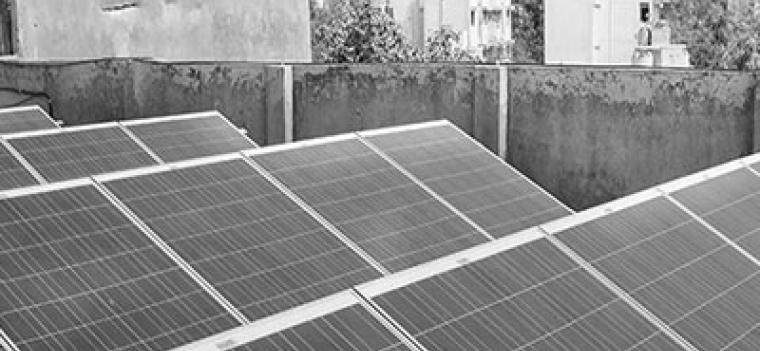News
Story Highlights
- One of the largest solar parks in the world, at 2 GW, is planned for construction in Pavagada Taluk in the Karnataka state of India.
- The Asia Sustainable and Alternative Energy Program (ASTAE) financed a grant for the Bank team to prepare the groundwork for developing its own lending to the Pavagada solar park and similar projects elsewhere in India.
- The solar park is based on a unique land leasing model where ownership of land remains with the farmers. Along with annual land lease payments, farmers can also gain tangible community benefits such as educational, health, and water initiatives through cooperative societies. More than 2,000 famers are in the process of signing leases for around 11,000 acres of land.
Planning One of the World's Largest Solar Parks in India
April 25 2016
With more than 300 days of sunshine every year, India has among the best conditions in the world to harness solar energy. In the past, steep upfront costs of solar projects and lack of access to long-term capital have slowed down solar energy growth. Now, in an effort to accelerate solar deployment, the government has set a target for 100 GW of solar by 2022, 20 GW of which is from solar parks.
One of the largest solar parks in the world, at 2 GW, is planned for next year in Pavagada Taluk in Karnataka, a state in southwest India. With 1 MW of solar photovoltaic power generating on average 1.6 million units of electricity per annum, the Pavagada solar park will power nearly 1 million households. The solar park is expected to reduce carbon dioxide emissions by 20 million tons and save 3.6 million tons of natural gas—currently the majority of Pavagada’s electricity supply—annually.
The Asia Sustainable and Alternative Energy Program (ASTAE) financed a grant for the Bank team to prepare the groundwork for developing its own lending to the Pavagada solar park and similar projects elsewhere in India. ASTAE support allowed the Bank to develop templates for required financial management and procurement actions, as well as the environmental and social screening undertaken for sustainable and well-managed solar parks. ASTAE funding also helped the World Bank communicate international best practices to the Indian team implementing the solar park.
To acquire the large areas of land needed to build the solar park, KSPDCL gave farmers the option of leasing out their land for 25 to 35 years. With scant rainfall and low crop yield in recent years, this land lease model can help farmers earn nearly $300 per acre per year while keeping the land in their names. In addition to annual land lease payments, farmers can gain tangible community benefits such as education, health, and water initiatives through cooperative societies. Currently, more than 2,000 farmers are in the process of signing leases for a total of about 11,000 acres of land.
“The land leasing model is of mutual benefit to the government and local farmers,” said G V Balaram, Chairman of KSPDCL and Managing Director of Karnataka Renewable Energy Development Limited. “Since government agencies cannot afford acquisition of 11,000 acres, we decided to lease rather than buy the land. With our interest being only in developing the park, we are involving NTPC Ltd., India’s largest power utility, and Solar Energy Corporation of India, a state-owned enterprise, to identify and finalize power developers.”
The solar park, scheduled for completion by September 2017, is anticipated to generate employment for 8,000 people. It will give preference to one person from every family that has leased land for the solar park.
While a solar park brings many benefits such as renewable energy and economies of scale, solar power also has operational challenges: it is not reliable across different seasons and not fully predictable. This volatility makes it difficult to schedule power across an electricity grid. Ways to address this challenge include storing energy and using other renewable energy technologies such as pumped storage hydropower, in the case of Karnataka. The World Bank is also assisting Powergrid, India’s central transmission utility, in building a green energy corridor—a transmission network—to export power from large renewable energy parks to other states in the country.
World Bank plans to share best practices both within India and around the world. The land lease model, for example, can be very successful in other densely populated countries like India. Lessons learned from the Pavagada solar park can inform another World Bank-funded solar park of 750 MW to be built in Madhya Pradesh, a state that ranks third in the country in terms of solar power generation capacity. Ultra-mega solar power projects totaling 22 GW have already been planned in more than 10 other states in India.
